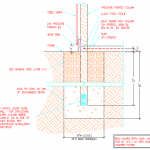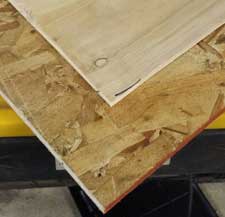Why to Verify Design Criteria
For those of you who are dedicated long term readers, I thank you. I’ve preached this subject more than once – but the message hasn’t gotten through to everyone yet. I will attempt to avoid boring anyone.
There are over 7000 building permit issuing jurisdictions in the United States. A full time employee, calling each of them for their most current code and load information, would need to reach and get data from nearly four an hour – for an entire year, and then it would be time to start all over again!
Each time a Hansen Pole Building is quoted, the design version of the Building Code, as well as all climactic forces the building is designed to, are listed on the pole building quote. Every quote also includes (in bold):
“You must confirm all code/design criteria with your Building Department prior to placing your order.
We recommend taking this page to your building department for them to verify all design criteria listed above.”
Now my Dad used to tell me, “You can lead a horse to water, and if you hold its head under long enough, it will drown”.
Such may be the case with design criteria. Many clients not only follow instructions, they have done their homework in advance! They have contacted their Building Departments for information, before they even started pole building shopping.
We love these people! They are prepared.
Most of the rest, follow instructions well – they happily contact their Building Department and verify the information before ordering. We love you as well!
Then there are the very small percentage who make assumptions….well, we know where assumptions lead to.
When a post frame building kit package is ordered, one of the items Purchaser agrees to is:
“Seller’s designs rely solely upon occupancy category and structural criteria for and at specified job site address only, which have been provided and/or verified by Purchaser. It is Purchaser’s and only Purchaser’s responsibility to ascertain the design loads utilized in this Agreement meet or exceed the actual dead loads imposed on the structure and the live loads imposed by the local building code or historical climactic records. Purchaser understands Seller and/or Seller’s engineer(s) or agents will NOT be contacting anyone to confirm.”
 A real life example occurred recently. Client ordered a building kit and thought the roof snow load was to be 35 psf (pounds per square foot). Way too late into the game (prefabricated roof trusses had been delivered to the jobsite) the Building Department tells the permit applicant, “Oops”!
A real life example occurred recently. Client ordered a building kit and thought the roof snow load was to be 35 psf (pounds per square foot). Way too late into the game (prefabricated roof trusses had been delivered to the jobsite) the Building Department tells the permit applicant, “Oops”!
With the right information verified in the beginning, the cost difference would have been minimal. Many times, truss repairs to add five psf of load are fairly affordable. Not in this case – many of the wood members, as well as the majority of the roof truss metal connector plates were originally close to being fully stressed in the original design. For practical purposes, another truss needed to be added to every truss set, in order to meet the slightly higher loads.
Here is a case where ten minutes of the customer’s time to verify, would have saved well over a thousand dollars!
Plan ahead with your design criteria using our helpful Pole Barn Planning Guide.









